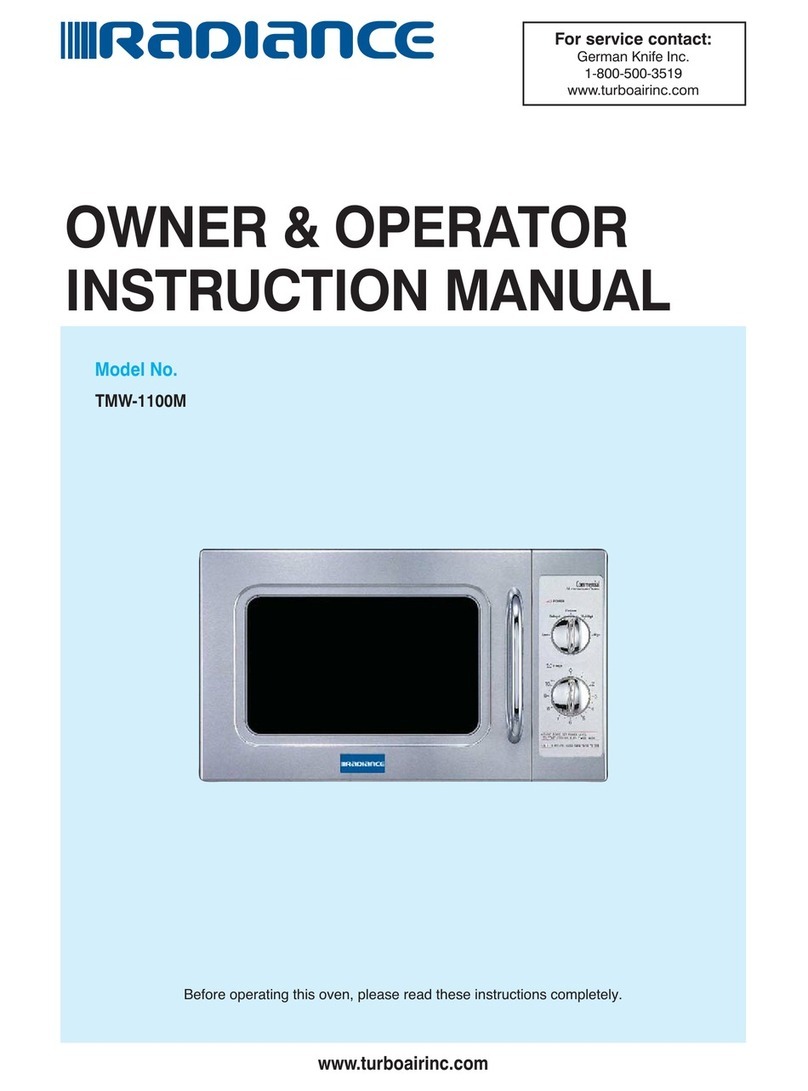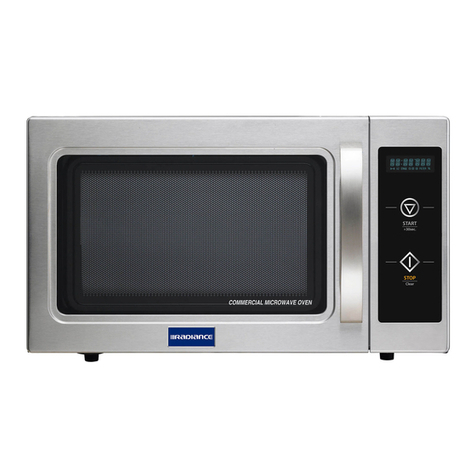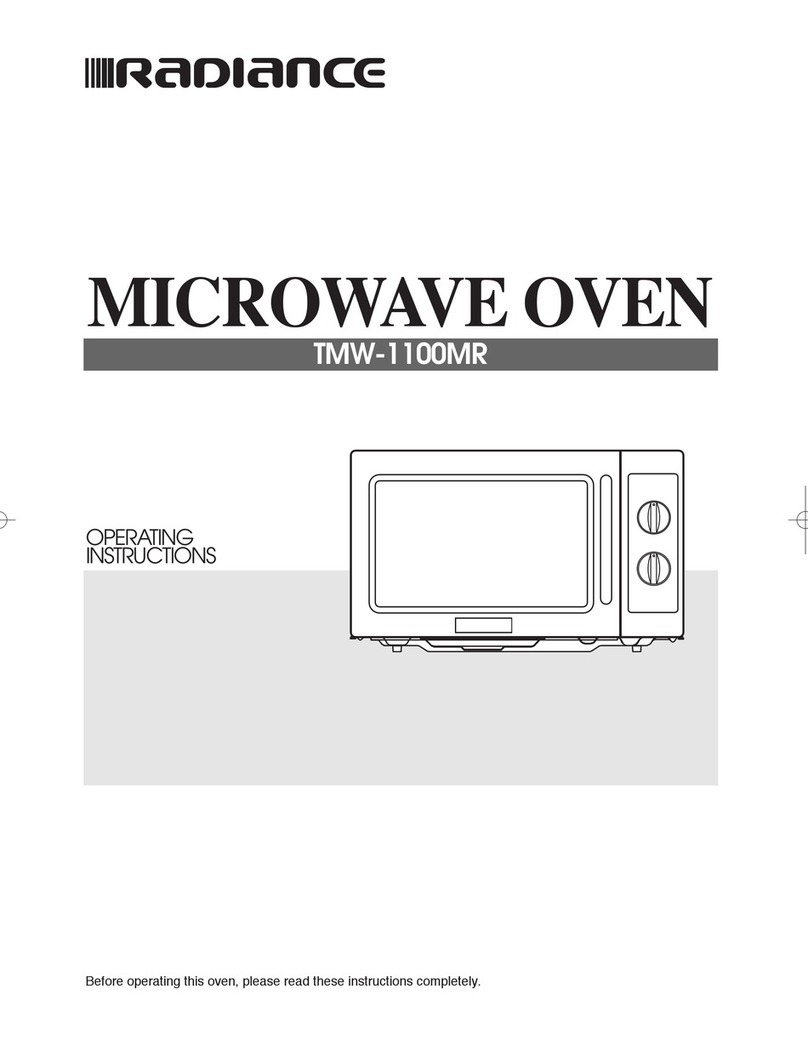2
IMPORTANT SAFETY INSTRUCTIONS
When using electrical appliances, basic safety precautions should be followed, including the following:
WARNING - To reduce the risk of burns, electric shock, fire, injury to persons or exposure to excessive
microwave energy:
SAVE THESE INSTRUCTIONS
11. Read all instructions before using the appliance.
12. Read and follow the specific “PRECAUTIONS TO
AVOID POSSIBLE EXPOSURE TO EXCESSIVE
MICROWAVE ENERGY” found on page 1.
13. This appliance must be grounded. Connect
only to properly grounded outlet.
See “GROUNDING INSTRUCTIONS” found on page
3.
14. Install or locate this appliance only in accor-
dance with the provided installation instructions.
15. Some products such as whole eggs and
sealed containers - for example, closed glass
jars-are able to explode and should not be heated
in this oven.
16. Use this appliance only for its intended use
as described in this manual. Do not use corrosive
chemicals or vapors in this appliance. This type of
oven is specifically designed to heat, cook, or dry food.
It is not designed for industrial or laboratory use.
17. As with any appliance, close supervision is
necessary when used by children.
18. Do not operate this appliance if it has a
damaged cord or plug, if it is not working
properly, or if it has been damaged or dropped.
19. This appliance should be serviced only by
qualified service personnel.
Contact nearest authorized service facility
for examination, repair or adjustment.
10. Do not cover or block any openings on the
appliance.
11. Do not store this appliance outdoors. Do not use this
product near water — for example, near a kitchen sink,
in a wet basement, or near a swimming pool, or similar
locations.
12. Do not immerse cord or plug in water.
13. Keep cord away from heated surfaces.
14. Do not let cord hang over edge of table or
counter.
15. When cleaning surfaces of door and oven that comes
together on closing the door, use only mild,non-
abrasive soaps or detergents applied with a sponge or
soft cloth.
16. To reduce the risk of fire in the oven cavity:
a) Do not overcook food. Carefully attend appliance
when paper, plastic, or other combustible materials
are placed inside the
oven to facilitate cooking.
b) Remove wire twist ties from paper or plastic bags
before placing bag in oven.
c) If materials inside the oven ignite, keep oven door
closed, turn oven off, and disconnect the power
cord, or shut off power at the fuse or circuit breaker
panel.
d) Do not use the cavity for storage purposes. Do not
leave paper products, cooking utensils, or food in
the cavity when not in use.
17. Do not use this microwave oven to heat corrosive
chemicals (for example, sulfides and chlorides).
Vapours from such corrosive chemicals may interact
with the contact and springs of the safety interlock
switches thereby rendering them inoperable.
18. Keep the waveguide cover clean at all times.
Wipe the microwave interior with a soft damp cloth
after each use. If you leave grease or fat
anywhere in the cavity it may overheat,
smoke or even catch fire when next using
the microwave.
19. Never heat oil or fat for deep frying as you
cannot control the temperature and doing so
may lead to overheating and fire.
20. Liquids, such as water, coffee, or tea are able to be
overheated beyond the boiling point without appearing
to be boiling due to surface tension of the liquid. Visible
bubbling or boiling when the container is removed from
the microwave oven is not always present. THIS
COULD RESULT IN VERY HOT LIQUIDS
SUDDENLY BOILING OVER WHEN A SPOON OR
OTHER UTENSIL IS INSERTED INTO THE LIQUID.
To reduce the risk of injury to persons:
1Do not overheat the liquid.
2Stir the liquid both before and halfway through
heating it
3Do not use straight-sided containers with narrow
necks.
4After heating, allow the container to stand in the
microwave oven for a short time before removing
the container.
5Use extreme care when inserting a spoon or other
utensil into the container.

































